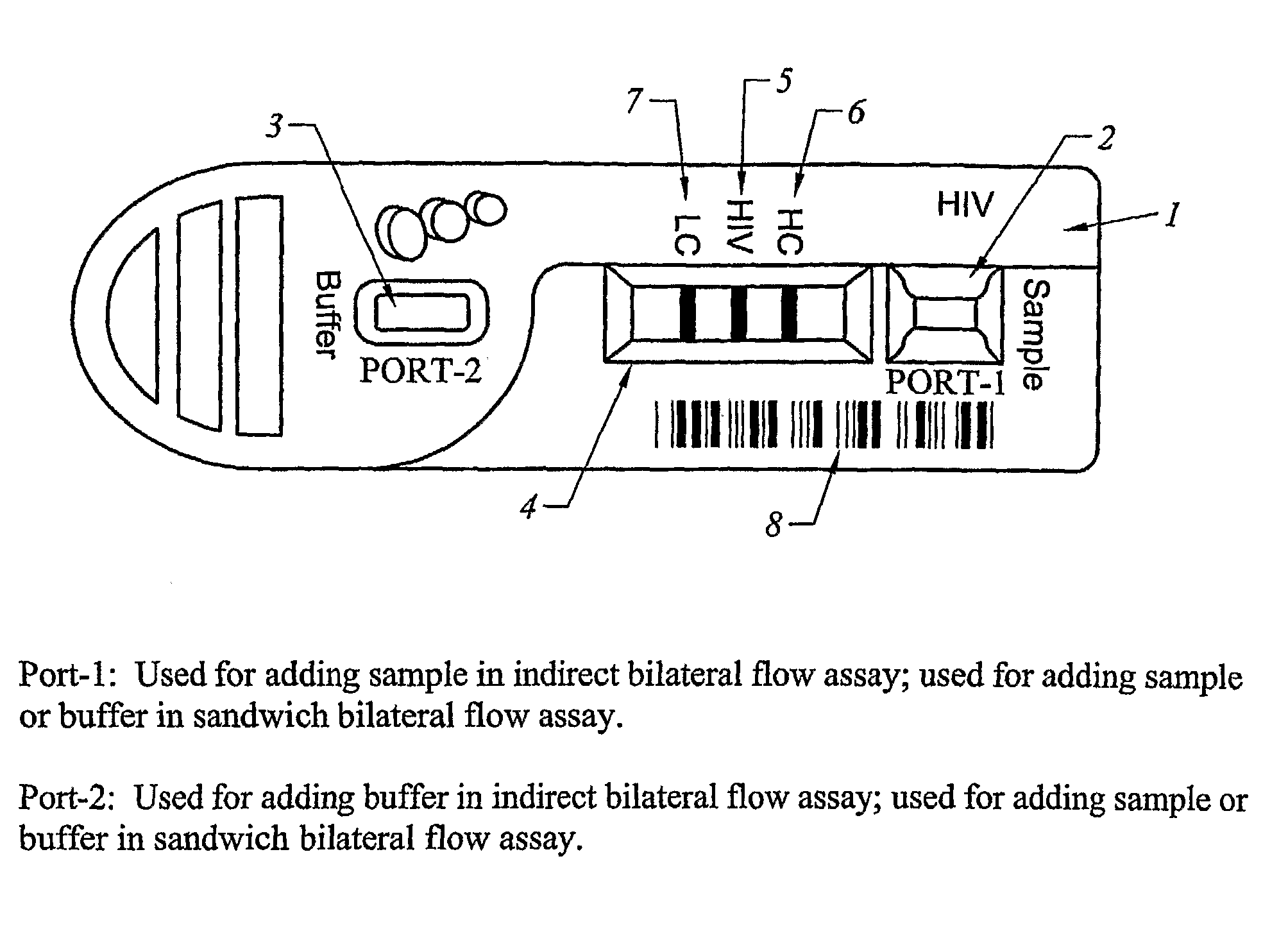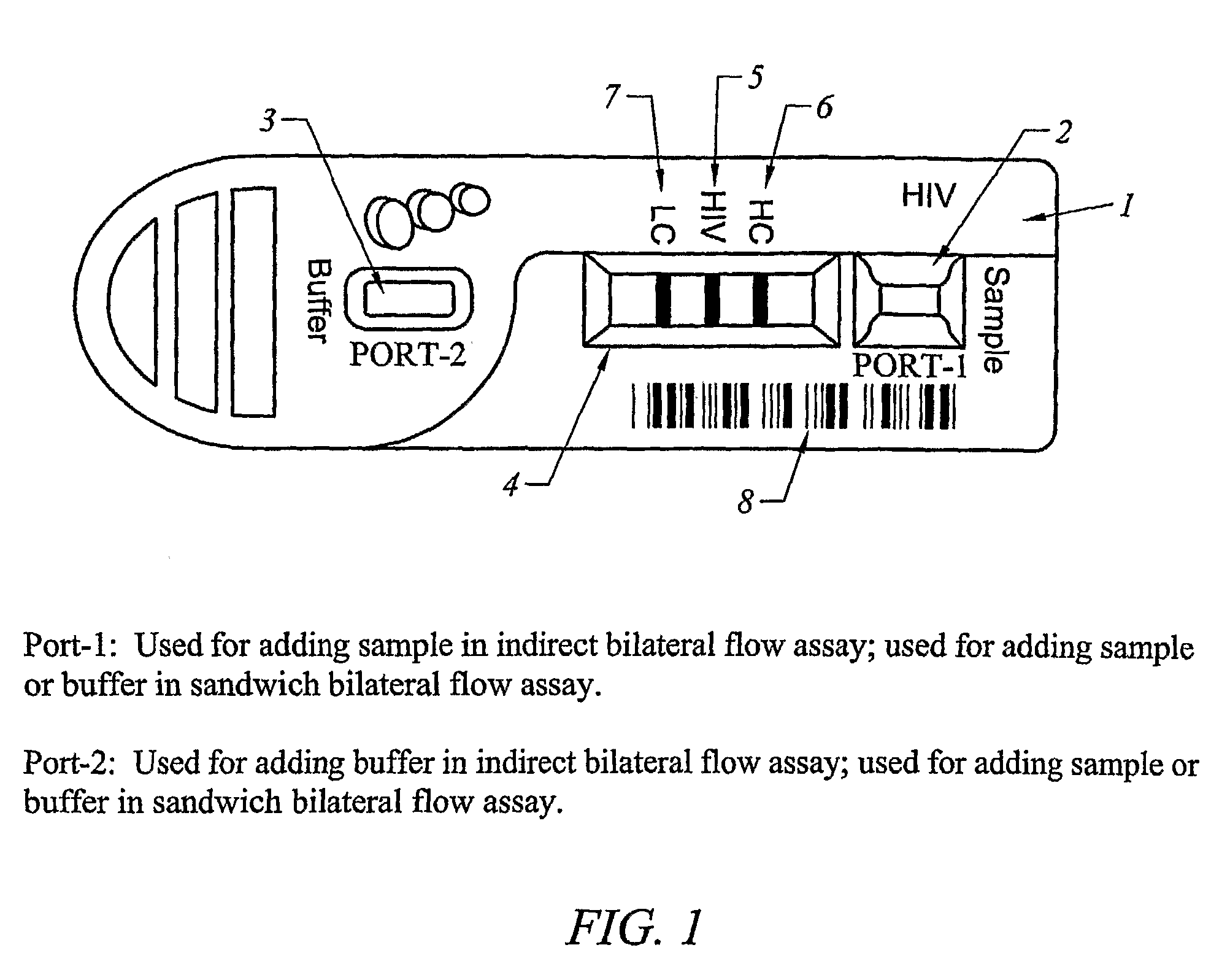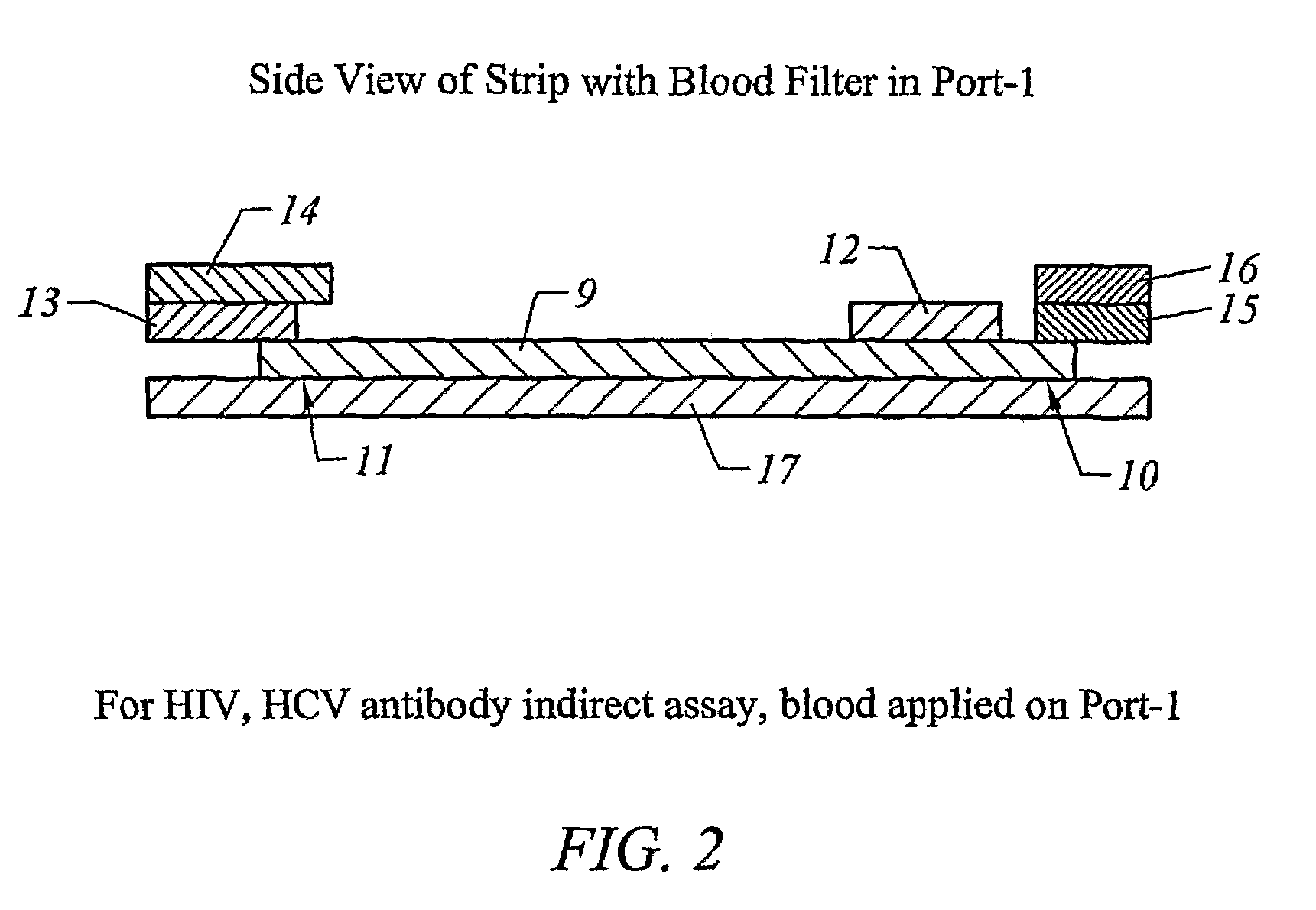Lateral flow system and assay
a lateral flow and assay technology, applied in the field of quantitative assay and system, can solve the problems of low efficiency in dissolving a volume variation, and insufficient teaching of the methods and system to analyze samples containing cells, including red blood cells and/or white blood cells or other cell types, and achieve good cell filtering and dissolving the conjugate or detectable agent
- Summary
- Abstract
- Description
- Claims
- Application Information
AI Technical Summary
Benefits of technology
Problems solved by technology
Method used
Image
Examples
example 1
Filtering Capability of Elements in Absence of Agglutinins
[0354]The test strip as shown in FIG. 2 was constructed with different elements as the sample filter. The filtering elements tested were all obtained from Ahlstrom Filtration, Inc. (USA) and include: cellulose absorbent grade 111, glass fibers grade #141 and grade #142, Cytosep grades 1660, 1661, 1662 and 1663. A sample containing whole blood was applied in Port-1 as shown in FIG. 1. The migration speed of plasma on the nitrocellulose chromatographic strip was observed. Results were obtained as set forth in Table 2.
[0355]
TABLE 2Blood Filtering Element Without Anti-hRBCTime of RBCVolumeMigrateappearanceElementSampleμlRBC Leakingmm / minBackgroundon NCGrade 111Whole Blood100Yes≦16Red8 minCellulose100Yes≦16Red8 min100Yes≦16Red8 min100Yes≦16Red8 min100Yes≦16Red8 minGrade 141Whole Blood100Yes≦16Red3 minGlass Fiber100Yes≦16Red3 min100Yes≦16Red3 min100Yes≦16Red3 min100Yes≦16Red3 minGrade 142Whole Blood100Yes≦16Red2 minGlass Fiber100Ye...
example 2
Blood Filtering Capability of Elements Pre-Treated with Anti-RBC
[0356]A ten percent (10%) TWEEN 20 solution was prepared by adding 1 g of TWEEN 20 to 9 ml of deionized water, mixing the solution, and storing the solution for about a week at room temperature.
[0357]A rabbit anti-human red blood cell antibody solution was prepared by adding 9.0825 g of Trizma Base (final concentration of 6.055 g / L), 1.7625 ml of HCl (final concentration of 1.7625 ml / L) and 1.8 g of EDTA.Na2 (final concentration of 1.2 g / L) to 1.35 liters of deionized water. The mixture was stirred slowly until the chemical reagents were dissolved completely, about an hour. The solution was kept at room temperature for 4 hours or overnight at 4° C. The pH of the solution was adjusted to pH 8.5±0.1 by adding HCl. Rabbit anti-human red blood cell antibody (anti-hRBC) was added to the solution to a final concentration of about 0.25 mg / ml. About 0.3 ml of 10% Tween-20 solution was added to the anti-hRBC to a final concentra...
example 3
Comparison Between Using Whole Blood Versus Using Plasma
[0361]The test strip as in Example 2 was prepared and whole blood or plasma was added to the sample filter in Port-1 and the results were compared, as shown in Table 4.
[0362]
TABLE 4Comparison of Testing Results Between Whole Blood and PlasmaRI =Anti-TESThRBCRBCTimeHCLCTESTDr / LCElementMg / mlSampleVolumeLeakingminDrDrDrDrS / COResult#1420.25HIV (−)50 μlNo30 min0.17770.0862000(−)0.25Blood50 μlNo30 min0.22680.0967000(−)0.2550 μlNo30 min0.0730.1083000(−)0.2550 μlNo30 min0.1830.0728000(−)0.2550 μlNo30 min0.32770.109000(−)#1420.25HIV (−)50 μlNo15 min0.40330.1926000(−)0.25Plasma50 μlNo15 min0.35870.1945000(−)0.2550 μlNo15 min0.360.1919000(−)0.2550 μlNo15 min0.38220.1955000(−)0.2550 μlNo15 min0.37590.1964000(−)#1420.25HIV (+)50 μlNo30 min0.12130.17810.20141.130811.311(+)0.25Blood50 μlNo30 min0.14190.14410.21811.513515.1325(+)0.2550 μlNo30 min0.17810.14080.21531.529115.2911(+)0.2550 μlNo30 min0.0740.0750.10321.376013.7626(+)0.2550 μlNo30 mi...
PUM
| Property | Measurement | Unit |
|---|---|---|
| thick | aaaaa | aaaaa |
| thick | aaaaa | aaaaa |
| thick | aaaaa | aaaaa |
Abstract
Description
Claims
Application Information
 Login to View More
Login to View More - R&D
- Intellectual Property
- Life Sciences
- Materials
- Tech Scout
- Unparalleled Data Quality
- Higher Quality Content
- 60% Fewer Hallucinations
Browse by: Latest US Patents, China's latest patents, Technical Efficacy Thesaurus, Application Domain, Technology Topic, Popular Technical Reports.
© 2025 PatSnap. All rights reserved.Legal|Privacy policy|Modern Slavery Act Transparency Statement|Sitemap|About US| Contact US: help@patsnap.com



